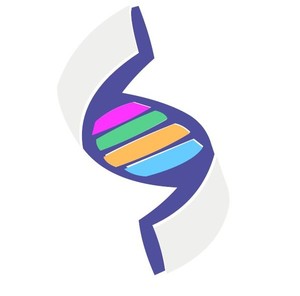Darbepoetin alfa (DA-α) manufactured by Hetero Biopharma (Hetero) is the first long-acting erythropoiesis-stimulating agent with extended dosing intervals. This gives it an advantage over epoetin alfa (EPO) and epoetin beta. It also has a half-life three-fold longer than that of EPO.
Cipla and Hetero’s DA-α ‘similar biologic’ Actorise was launched in India in June 2014 [1]. This study aimed to determine whether a similar biologic DA-α has similar efficacy and safety compared to EPO when given at a reduced dose frequency for the treatment of renal anaemia in Indian patients with end-stage renal disease (ESRD) undergoing dialysis [2].
Patients (n = 126) aged ≥ 18 to ≤ 65 years with ESRD undergoing dialysis who had haemoglobin (Hb) levels < 10 g/dL after receiving EPO were switched to DA-α (0.45 μg/kg) once weekly subcutaneously or EPO 50 IU/Kg thrice weekly subcutaneously (centrally randomized 1:1) for 12–24 weeks (correction phase) followed by 12 weeks’ maintenance phase (for Hb levels ≥10 g/dL). In the maintenance phase, if the patient’s Hb levels went above the target range (≥ 11.5 g/dL) for two consecutive weekly assessments, the dosage was decreased by 25%. The dosage was increased by 25%, if after achieving the target range (10–12 g/dL), the patient’s Hb level was below 10 g/dL. The primary efficacy endpoint was mean change in Hb level from baseline to end of correction phase. Safety endpoints were the incidence of treatment emergent adverse events (TEAEs) and immunogenicity as assessed by anti-drug antibody titres using ELISA methods. Efficacy and safety analysis were performed for the intention-to-treat (ITT) n = 126 and per-protocol (PP) n = 107 populations.
Overall, 213 patients who underwent dialysis were screened for anaemia at 14 nephrology centres across India. Of these, 126 patients who met the eligibility criteria were enrolled and randomized in a 1:1 ratio to receive test (n = 63) and reference (n = 63) treatments. In the ITT population the between group difference in mean Hb change was −0.01 g/dL (95% CI -0.68 to -0.66, p = 0.97). After adjusting for covariates, the difference was -0.2878 g/dL (95% CI -0.936 to 0.360). The lower limit of the two-sided 95% CI of the primary endpoint was above the pre-specified non-inferiority margin of -1.0 g/dL. A similar trend of non-inferiority was observed for the PP population.
For the secondary efficacy endpoints, improvement in Hb levels was observed as early as Week 4 in both treatment groups, which showed similar mean Hb change in the DA-α (0.30 g/dL, 95% CI -0.01 to -0.61, p = 0.0566) and EPO (0.74 g/dL, 95% CI 0.29 to 1.19, p = 0.0019) groups. The difference in mean Hb change between the two groups was -0.44 g/dL (95% CI -0.97 to -0.09, p = 0.105), which was not statistically significant, irrespective of the reduced frequency of DA-α administration. Increase in Hb levels from baseline was also similar in the PP population even at Week 4 (mean Hb change: -0.62, 95% CI -1.14 to -0.10, p = 0.0209).
In the DA-α group, the most commonly reported TEAEs by SOC were; respiratory, thoracic and mediastinal disorders (14.3%), general disorders and administration site conditions (12.7%), investigations (9.5%), and infections and infestations (7.9%). In the EPO group, the most commonly reported TEAEs by SOC were; respiratory, thoracic and mediastinal disorders (22.2%), general disorders and administration site conditions (15.9%), vascular disorders (12.7%), gastrointestinal disorders (11.1%), infections and infestations (9.5%), and investigations (7.9%). There was no statistical difference between the two groups in terms of TEAEs. In this study, patients who were treated with DA-α could effectively maintain their Hb levels in the target therapeutic ranges and required fewer dose adjustments than those treated with EPO.
The authors concluded that the study results demonstrated that for patients with ESRD undergoing dialysis, administering DA-α at a lower-dose frequency, is equally effective, well-tolerated and had a similar safety profile compared to EPO for treating renal anaemia.
Editor’s comment
It should be noted that similar biologics approved in India might not have been authorized following as strict a regulatory process as is required for approval of biosimilars in the European Union. The EMA (European Medicines Agency) regulatory requirements ensure the same high standards of quality, safety and efficacy for biosimilars as for originator biologicals, and also include a rigorous comparability exercise with the reference product.
Related article
Biosimilars of darbepoetin alfa
References
1. GaBI Online - Generics and Biosimilars Initiative. Darbepoetin alfa ‘similar biologic’ launched in India [www.gabionline.net]. Mol, Belgium: Pro Pharma Communications International; [cited 2019 Aug 30]. Available from: www.gabionline.net/Biosimilars/News/Darbepoetin-alfa-similar-biologic-launched-in-India
2. Sinha SD1, Bandi VK1, Bheemareddy BR1, et al. Efficacy, tolerability and safety of darbepoetin alfa injection for the treatment of anemia associated with chronic kidney disease (CKD) undergoing dialysis: a randomized, phase-III trial. BMC Nephrol. 2019;13;20(1):90.
Permission granted to reproduce for personal and non-commercial use only. All other reproduction, copy or reprinting of all or part of any ‘Content’ found on this website is strictly prohibited without the prior consent of the publisher. Contact the publisher to obtain permission before redistributing.
Copyright – Unless otherwise stated all contents of this website are © 2019 Pro Pharma Communications International. All Rights Reserved.








 2
2










Post your comment